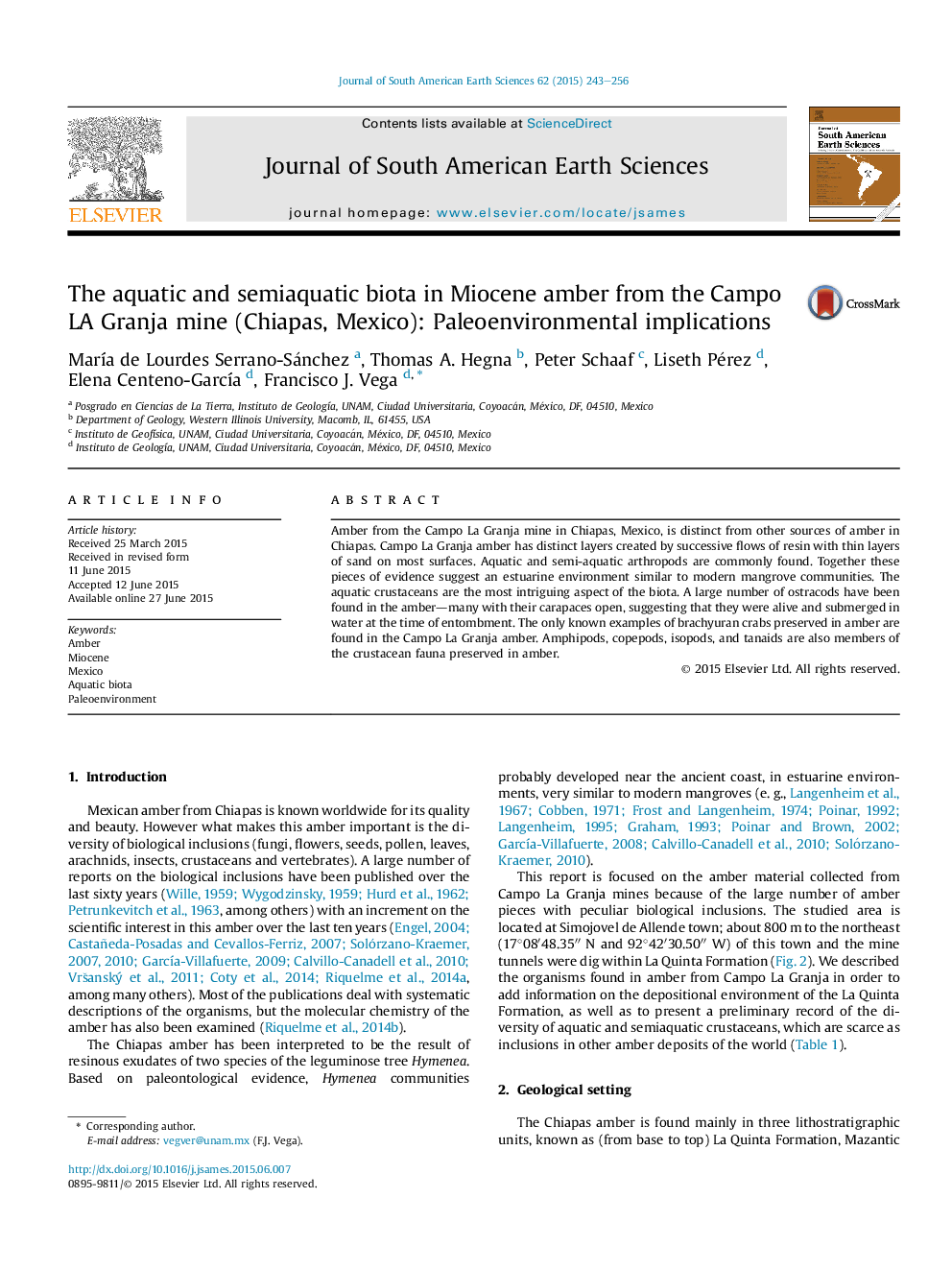| Article ID | Journal | Published Year | Pages | File Type |
|---|---|---|---|---|
| 4682196 | Journal of South American Earth Sciences | 2015 | 14 Pages |
•The aquatic and semiaquatic fauna in fossiliferous amber from Chiapas is presented for first time.•Biostratigraphy and isotope dating confirm an early Miocene age for the Campo La Granja amber.•Mixed estuarine, freshwater and terrestrial fauna, and stratified sandstone suggest a mangrove environment of deposition.•The contribution is an important reference for Mexican and other amber deposits with similar paleoenvironments of deposition.•Several crustacean groups are reported for first time in Mexican amber (copepods, ostracods, tanaidaceans, crabs).
Amber from the Campo La Granja mine in Chiapas, Mexico, is distinct from other sources of amber in Chiapas. Campo La Granja amber has distinct layers created by successive flows of resin with thin layers of sand on most surfaces. Aquatic and semi-aquatic arthropods are commonly found. Together these pieces of evidence suggest an estuarine environment similar to modern mangrove communities. The aquatic crustaceans are the most intriguing aspect of the biota. A large number of ostracods have been found in the amber—many with their carapaces open, suggesting that they were alive and submerged in water at the time of entombment. The only known examples of brachyuran crabs preserved in amber are found in the Campo La Granja amber. Amphipods, copepods, isopods, and tanaids are also members of the crustacean fauna preserved in amber.
